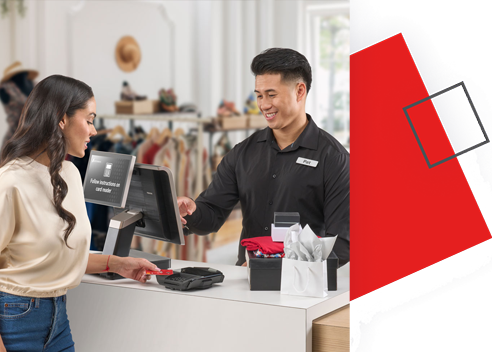As more consumers turn to online shopping for their everyday needs, convenience stores are discovering they need to adapt to remain relevant. For many, that means offering online ordering and delivery services, while for others, it means developing mobile apps and other digital tools to make it easier for customers to shop on the go.
In this final installment of our State of the Industry series, we break down the latest trends in C-stores, including what they're prioritizing and their plans for keeping up in retail over the next few years.
Offer More Digital Experiences
Across each of the reports we've covered so far in this series, there has been one shared priority: unifying physical and digital customer experiences. And Convenience is no different. While many C-stores are starting to pilot innovative solutions to help unify their channels, some may still need help. But why? A large reason is that 82% of C-stores lack a unified architecture that can unite the two successfully.* For instance, only 8% offer shoppers a unified eCommerce and in-store basket.*

Adopting new technologies such as self-checkout kiosks, mobile payments, and automated inventory management systems will likely transform how convenience stores operate. These technologies can help stores reduce costs, increase efficiency, and provide a more seamless shopping experience for customers.
Additionally, it’s important to remember that the "experience" doesn't start in the store. It begins before shoppers even enter the store. Offering digital experiences outside, such as curbside pick-up, personalized coupons, and rewards programs to bring customers to your stores are valuable ways for C-stores to incentivize customers.
Innovate New Store Formats
Investigating new business models requires time and effort, but it also opens up new opportunities and promotes business growth. You need the ability to scale and evolve regardless of whether your customers choose mobile ordering, self-checkout, contactless payments, curbside delivery, product-recognizing kiosks, or any other shopping or payment method.
A truly innovative retailer takes advantage of the best innovation wherever it exists in the company. One example of this is using eCommerce personalization in-store. Customizing the shopping experience for the individual customer means retailers can increase engagement, loyalty, and sales by taking an existing approach they are familiar with and applying it in a way they have not done before.

Personalization can also improve the customer experience by making it easier for customers to find what they're looking for and access more relevant and helpful information throughout their shopping process. There are several ways to implement a personalized retail strategy, but we've pulled together some of the most impactful examples.
• Personalized Promotions: Offer personalized promotions to customers based on their shopping behavior and preferences. For example, a customer who frequently purchases energy drinks may receive a promotion for a new energy drink flavor or brand.
• Customized Product Offerings: Tailer product offerings to meet your customers' specific needs and preferences. For example, a convenience store on a university campus may offer a selection of quick, convenient snacks for the on-the-go student.
• Personalized In-Store Experiences: Use data and technology to provide personalized in-store experiences to customers. For example, a convenience store may offer a touch-screen kiosk that allows customers to customize their meal, drink, or snack options.
• Mobile Ordering and Payment: Implement mobile ordering and payment options for customers, allowing them to order and pay for their purchases using their mobile phones. This provides a more convenient and personalized shopping experience for customers always on the go.
• Customer Loyalty Programs: Offer customer loyalty programs that reward customers for their repeat business. These programs can be customized to customers' individual needs and preferences, providing incentives for them to continue shopping at the store.
Increase the Speed of Experimentation
As the retail industry becomes more competitive, it's crucial to stay ahead of the curve by experimenting with new strategies and tactics faster than the competition. By testing new ideas quickly and without significant investment or risk, retailers can identify what does and doesn't work early on and make data-driven strategic decisions.

In practice, retailers can use tools like A/B testing and machine learning algorithms to determine how best to evolve their business to fit customer needs using real-time data. When retailers have the freedom to experiment at the speed of their business, they also have the freedom to fail fast and move on to finding other solutions worth their time, money, and effort.
When your business model is adaptable and scalable, you don't have to worry about the cost of ripping and replacing your entire technology infrastructure when it's time to implement new innovation strategies. A broad range of retail technology designed with the future in mind can make that possible.
Overall, the future of convenience stores will be shaped by a combination of these trends and others that emerge over time. The stores that can adapt and stay ahead of the curve will be the best positioned to succeed in the years ahead.
*All images and statistics were pulled from Incisiv, & Toshiba. (2023). State of the Industry: The Future of C-Stores









